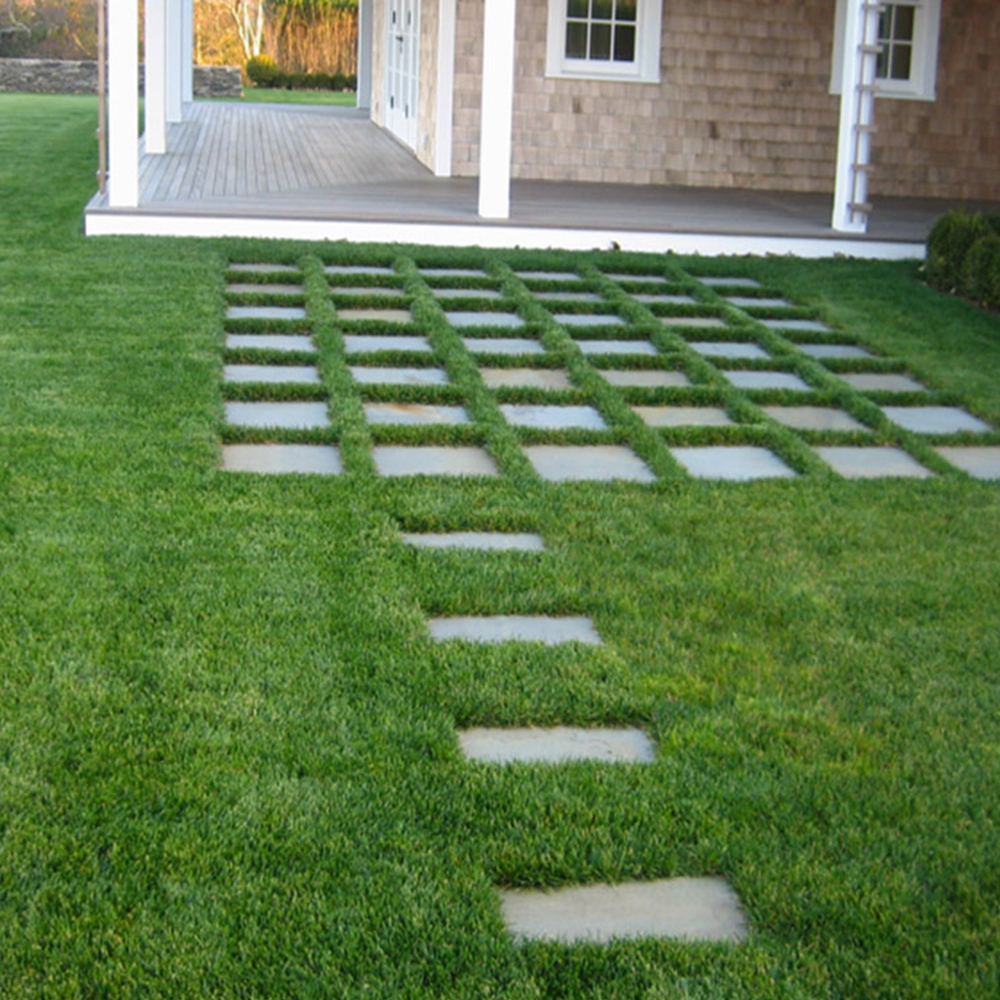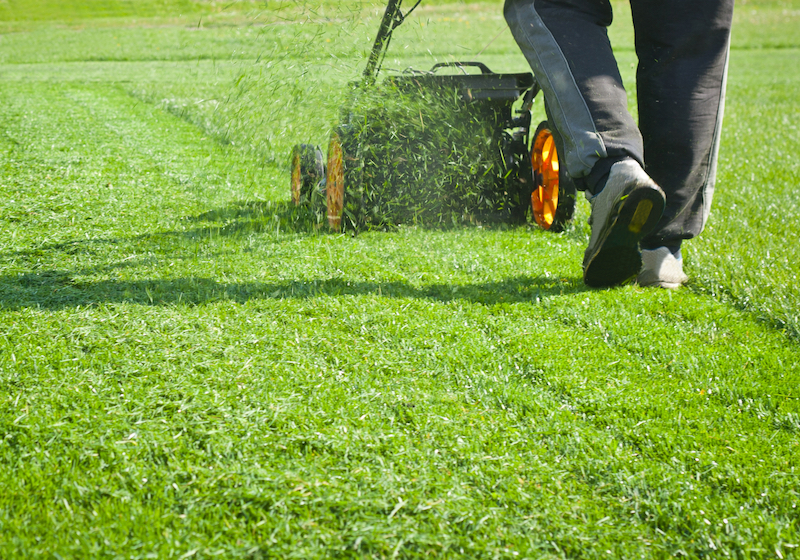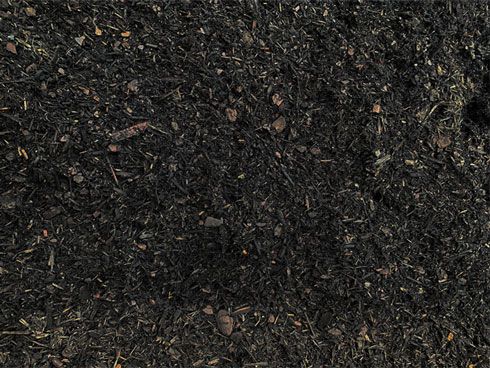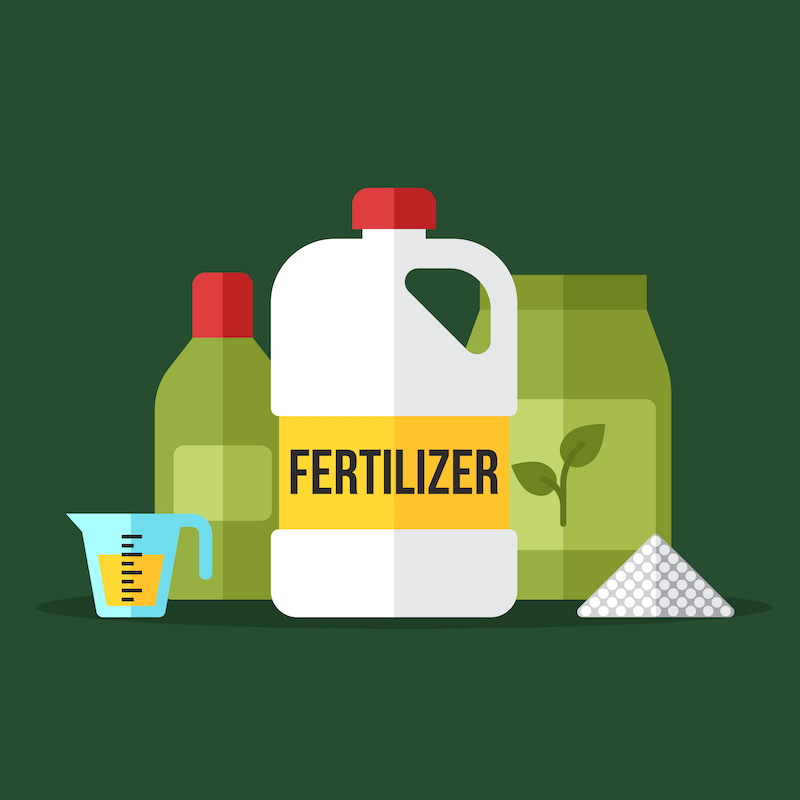
The most important part of managing a fescue lawn is providing fertilizer and preventing disease, insects and weeds. The premium program listed below will provide all the essential elements that your lawn requires in a season to grow healthy. In recent years, there have been many advancements in tall fescue seed. There are many varieties in the market today all of which will produce a beautiful, lush green lawn. Carolina Fresh Farms offers Carolina Blue II, available in most Carolina Fresh stores.
Seasonal Maintenance for Fescue
SPRING
March 1 - March 15
16-0-8 0.38% Barricade - Prevents summer weeds such as crabgrass.
May 1 - May 15
19-0-6 Confront 3/Dimension
May 15 - May 21
0-0-7 Allectus - For the control of ants and grubs.
SUMMER
June 1 - June 21
Fungicide: Headway, Armada, Eagle, or Pillar - Must rotate between these products.
June 21 - July 7
6-1-11 7% Fe - Produces green color w/out flushing top growth late in the season. Fungicide (Any)
August 1 - September 1
Soil Samples - Take soil sample to test for pH as well as fertility levels of your lawn.
August 15 - August 31
0-0-7 Acelepryn - Controls grubs and other insects such as fall armyworms.
FALL
September 15 - September 30
Carolina Fresh Blue II Blend Seed. 16-25-12 w/ MESA - Provides phosphorus to promote quick rooting.
WINTER
October 30th - November 7th
25-0-5 51% MESA - Provides nitrogen to mature the lawn.
December 15th - December 31st
25-0-5 51% MESA
Maintenance Tips for Fescue

Mowing
One of the principle keys to maintaining a healthy fescue lawn is proper mowing. Due to the high humidity and temperatures in the transition zone, it is mandatory that a fescue lawn be mowed no closer than 3 ½ inches during the summer months. If you desire, the lawn may be mowed as close as 2 inches during the fall and winter.

Watering
Your lawn requires 1 to 1 ½ inches of water per week during the growing season. Irrigation of the lawn should be performed in the early hours of the morning just before daylight. This practice will avoid any rapid evaporation of water before it reaches the lawn; yet allow the leaf tissue to dry quickly after the sun rises. Do not water your lawn every morning for short intervals. This process will only encourage shallow root growth. Instead, water your lawn for long periods two to three times a week.

Aeration
Aeration has two purposes. The first is to simply loosen the soil. The second is to prune the roots. Core aeration is the recommended method and should be performed every 2 years on a typical home lawn during the growing season. If your lawn receives heavy foot traffic, it would be advisable to aerate every year. Aeration should be performed during the growing season of the turf.

Soil Basics
A practical understanding of your soil is essential in managing your lawn. Soil pH is perhaps the most crucial element. Most turf grasses perform best when the soil pH falls between 6.3 and 7.0. We recommend that a soil test be performed annually to check the pH values as well as other nutrient levels within the soil profile. Any Carolina Fresh Farms Turf Center will be happy to send your soil samples to a soil testing laboratory free of charge. All you need to do is bring in 4 cups of soil into the Carolina Fresh Farms outlet and we'll be able to help.

Specialty Products
Verde-Lawn Hydro: Improves calcium availability in the soil and in the plant while providing improved soil moisture retention. When applied at a rate of 10 pounds per 1000 sq ft, Verde-Lawn Hydro will raise the soil pH in most soils up to one full point. Use a fungicide that's granular or in the form of water dispersible granules. Headway: Controls a wider range of diseases than any other currently registered product, including dollar spot, brown patch and all other major turf diseases. Pillar G: Combination of two effective ingredients to control and prevent numerous turf diseases. Eagle: Excellent long-term preventative control of most diseases in turf. Armada 50 WDG: Available in water dispersible granules that require mixing with water and application via a backpack sprayer. It is effective against 16 of the toughest turf diseases and has a residual of 21 to 28 days.

Fungus Alert
Brown Patch disease can be commonly found in Tall Fescue during warm, wet climates. Typically, you may run into fungus issues in late Spring/Early Summer. Brown patch will look as if someone poured hot oil on the lawn the night before. Within a few days, these areas will die and the infected area will continue to grow in size. A simple application of a systemic fungicide such as Pillar, Armada, Eagle or Headway will help prevent and cure this disease. Keep an eye out for these signs and treat your lawn as quickly as possible.
